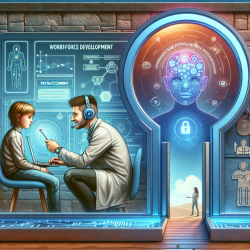Introduction
Stroke remains a leading cause of death and disability worldwide, often resulting in a range of impairments, including aphasia. Approximately one-third of stroke survivors experience aphasia, which can severely hinder communication and social participation. While rehabilitative programs can be beneficial, access to continuous therapy remains a challenge, particularly for those in rural areas or with additional health complications.
The Role of Telerehabilitation
Telerehabilitation (TR) offers a promising solution by delivering rehabilitation services through information and communication technologies. This approach not only extends care beyond hospital settings but also facilitates ongoing support and intervention for individuals with disabilities. TR can include various services such as assessment, intervention, and education, tailored to meet individual needs.
Evidence Supporting TR in Speech and Language Therapy
Several studies have validated the use of TR in speech and language therapy, demonstrating its effectiveness in treating conditions like Parkinson's disease and stuttering across different age groups. However, evidence regarding TR's efficacy in treating aphasia remains limited, necessitating further exploration and analysis.
Study Overview and Methodology
A recent systematic review aimed to evaluate the effectiveness of TR for aphasia compared to traditional face-to-face therapy. The review analyzed data from five electronic databases, ultimately including five studies with 132 participants in the meta-analysis. The methodological quality was assessed using established tools, and a meta-analysis was conducted using Review Manager 5.3 software.
Key Findings
The meta-analysis revealed that TR and face-to-face treatments yielded comparable outcomes in several key areas:
- Auditory comprehension (SMD = −0.02; 95% CI −0.39, 0.35)
- Naming accuracy (SMD = −0.09; 95% CI −0.44, 0.25)
- Aphasia Quotient (MD = −2.18; 95% CI −16.00, 11.64)
- Generalization (SMD = 0.77; 95% IC −0.95, 2.49)
- Functional communication skills (SMD = −0.08; 95% IC −0.54, 0.38)
These findings suggest that TR can be as effective as conventional therapy in achieving linguistic improvements for people with aphasia.
Implications for Practice
While the quality of evidence remains a consideration, TR holds significant potential for enhancing access to therapy and maintaining treatment continuity. As TR can deliver similar outcomes to face-to-face therapy, it presents a viable alternative, especially for those with limited access to in-person services.
Conclusion
In conclusion, telerehabilitation offers a promising approach to speech and language therapy for aphasia, aligning with conventional methods in terms of effectiveness. Further research and systematic reviews are needed to strengthen the evidence base and inform clinical decision-making. For more information, please follow this link.










